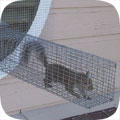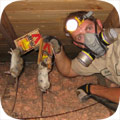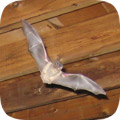- collegestation@wildlifeanimalcontrol.com
Call 24/7 for a free quote:
979-431-1508
College-Station-Bryan Wildlife Animal Control
Professional Wildlife Removal Company Servicing College-Station-Bryan, TX
If you have a problem with wildlife in your College-Station-Bryan home, your best option is to hire a company that specializes in Texas wildlife removal only. This is a specialty business, and regular pest control companies do not use the proper techniques to solve animal problems. I have spent many years reviewing Texas and College-Station-Bryan, and I recommend the following:
Wildlife Removal College-Station-Bryan
Cell Phone: 979-431-1508
NOTE: If you have a dog or cat problem, call Brazos County Animal Services: (979) 209-5260

Wildlife Removal College-Station-Bryan specializes primarily in removing animals from attics of homes and buildings - this includes squirrels in attics, raccoons, and rats or mice in homes. Texas also has a documented problem with
bats in buildings, and Wildlife Removal College-Station-Bryan is specially trained in bat removal. They also perform general wildlife trapping services, such as the capture and removal of skunks or opossums on the
property. Call 979-431-1508 to discuss your critter problem and schedule a same-day or next-day appointment. Click here to learn more about what prices we charge in 2020.
When hiring a company to solve your wild animal problem, you want these features:
- Specializes in wildlife removal, not pest control
- Fully Texas and Brazos County licensed and insured
- Works 7 days per week (critters don't take weekends off)
- Performs full building inspections: enters and inspects attic
- Performs exclusion repairs, with guarantee against animal re-entry
- Offers cleanup of biohazardous wildlife waste
Wildlife Removal College-Station-Bryan is a full-service College-Station-Bryan wildlife removal company. This is very different from a regular College-Station-Bryan pest control company. The pest control companies spray poison to kill insects. This is not at all
similar to wildlife removal. Wildlife Removal College-Station-Bryan performs a full inspection of the home or property, and determines why the animal(s) are there, and if inside a building, how the animals got inside. All
animals (including rodents) are trapped and removed, or if possible, removed from the building using special exclusion devices. Once the animals are gone, preventative repairs are essential, and
cleanup is sometimes recommended.
 College-Station-Bryan wildlife trapping - it's not as simple as it may seem. It's illegal in Texas to trap without a license. Trap type is very important and there are many different types, bait is somewhat relevant, trap placement
is vital, and there are dozens of small things that are very important to know.
Safety is a concern. Then once the animal is trapped, it must be removed and dealt with in the proper manner according to Texas law. We offer College-Station-Bryan raccoon removal. Read more about how to get rid of raccoons.
College-Station-Bryan wildlife trapping - it's not as simple as it may seem. It's illegal in Texas to trap without a license. Trap type is very important and there are many different types, bait is somewhat relevant, trap placement
is vital, and there are dozens of small things that are very important to know.
Safety is a concern. Then once the animal is trapped, it must be removed and dealt with in the proper manner according to Texas law. We offer College-Station-Bryan raccoon removal. Read more about how to get rid of raccoons.
 Animals in attics - this is our specialty at Wildlife Removal College-Station-Bryan. Many types of animals like to live in attics. This includes squirrels, raccoons, rats, mice, bats, birds, and even possums. Critters like to go into attics for a safe place to live
and raise their young. Removing animals from attics is very complex work, partly because of the presence of baby animals. If you need College-Station-Bryan squirrel removal, we can remove all the squirrels from your attic, and seal out any future ones. Read more about how to get rid of squirrels.
Animals in attics - this is our specialty at Wildlife Removal College-Station-Bryan. Many types of animals like to live in attics. This includes squirrels, raccoons, rats, mice, bats, birds, and even possums. Critters like to go into attics for a safe place to live
and raise their young. Removing animals from attics is very complex work, partly because of the presence of baby animals. If you need College-Station-Bryan squirrel removal, we can remove all the squirrels from your attic, and seal out any future ones. Read more about how to get rid of squirrels.
 Rodent control must be done in a very specific way. First off, the most important thing is that all the openings that rats and mice can use to enter a house be sealed. Then all the rodents must be physically trapped and removed.
Never, ever use poison! Most College-Station-Bryan exterminators will just use this lazy poison technique to kill rodents, and it causes more harm than good - dead stinky rats, and it doesn't solve the problem. Call us for correct College-Station-Bryan rat removal. Read more about how to get rid of rats.
Rodent control must be done in a very specific way. First off, the most important thing is that all the openings that rats and mice can use to enter a house be sealed. Then all the rodents must be physically trapped and removed.
Never, ever use poison! Most College-Station-Bryan exterminators will just use this lazy poison technique to kill rodents, and it causes more harm than good - dead stinky rats, and it doesn't solve the problem. Call us for correct College-Station-Bryan rat removal. Read more about how to get rid of rats.
 Bat removal is a highly specialized task. Texas is known to have colonizing bats who often live in buildings. Bats love attics. If not removed, the colony can grow to a very large size over the years. The bat droppings are often corrosive and
cause health risks. The same goes for bird droppings on or in buildings. We perform College-Station-Bryan pigeon removal and bird control. But our specialty is College-Station-Bryan bat removal. We remove 100% of the bat colony and seal the building so that it's totally bat-proof. Read more about how to get rid of bats.
Bat removal is a highly specialized task. Texas is known to have colonizing bats who often live in buildings. Bats love attics. If not removed, the colony can grow to a very large size over the years. The bat droppings are often corrosive and
cause health risks. The same goes for bird droppings on or in buildings. We perform College-Station-Bryan pigeon removal and bird control. But our specialty is College-Station-Bryan bat removal. We remove 100% of the bat colony and seal the building so that it's totally bat-proof. Read more about how to get rid of bats.
 If you have animals inside a house, no job is complete without proper exclusion repairs. If you simply hire a College-Station-Bryan trapper who only removes the critters, then the problem will return. You need to hire a College-Station-Bryan wildlife control company that identifies 100% of the animal entry points
into your building, and seals them shut with professional repairs. In addition, in many cases animals have left waste or contamination behind, and you'll want a company that can provide professional cleaning services. Wildlife Removal College-Station-Bryan does both.
If you have animals inside a house, no job is complete without proper exclusion repairs. If you simply hire a College-Station-Bryan trapper who only removes the critters, then the problem will return. You need to hire a College-Station-Bryan wildlife control company that identifies 100% of the animal entry points
into your building, and seals them shut with professional repairs. In addition, in many cases animals have left waste or contamination behind, and you'll want a company that can provide professional cleaning services. Wildlife Removal College-Station-Bryan does both.
The above are just some of the services offered by Wildlife Removal College-Station-Bryan. We also trap and remove animals that destroy lawns, such as moles, or digging animals. Sometimes animals like opossums will live under buildings, steal pet food, raid garbage cans, etc.
Read about how to get rid of opossums. Skunks commonly live under sheds or decks, and set up a den. We can trap and remove them without them spraying. Read about how to get rid of skunks. Wildlife Removal College-Station-Bryan
also provides dead animal removal in College-Station-Bryan. If you need help with any other wildlife conflict, from a fox, beaver, groundhog, or any other critter, we can solve it. We also do College-Station-Bryan snake removal - most of the snakes in Texas are not venomous, but
call us if you want safe removal, or read about how to get rid of snakes in College-Station-Bryan. And remember, we are a private business, not Brazos County Animal Control Services, so if you have a dog or cat problem, call the County at (979) 209-5260.
Brazos County animal services does not handle any wildlife issues.
Wildlife Removal College-Station-Bryan: 979-431-1508
College-Station-Bryan Pricing Info For Year 2020
 Every wildlife removal situation is different, from the species of animals involved, the location of the animal inside a house or outside, the extent of repairs or cleanup, etc. It's impossible to give one-size-fits-all prices. Examples MIGHT include:
Every wildlife removal situation is different, from the species of animals involved, the location of the animal inside a house or outside, the extent of repairs or cleanup, etc. It's impossible to give one-size-fits-all prices. Examples MIGHT include:
Small Job: For example, a one-stop job to remove an animal in the yard: $100 on up
Medium Job: For example, getting critters out of your house with minor repairs: $300 on up
Large Job: For example, a project involving many service trips and complex work: $500 on up
Give us a phone call now and tell us about your wildlife issue and we will be able to give you a price estimate over the phone. If you're cool with it, we can schedule a same-day or next-day appointment if you like. Our prices are fair, and a good value because we do the job right, the first time.
College-Station-Bryan Wildlife Tip #1:
Signs That a Groundhog has Rabies
Although rabies affects humans, it is more widespread in animals. Rabies affects a large number of animals for example; cats, dogs, groundhogs and a number of rodents. Many people think that an animal having foam in the mouth is the only way to tell whether an animal is sick with rubies. However, although the presence of foam in the mouth is a true characteristic of an infected animal, not all animals show this symptom. In addition, it is imperative to note that all the symptoms cannot be found on a single groundhog, and so you need to be careful when checking for the signs. Below are some of the characteristics of an infected groundhog.
Paralysis
Most rabid animals appear to be fully or partially paralyzed. It is important to note that not all paralyzed groundhogs are infected with rabies since there are other causes of paralysis like health conditions or injuries.
Decrease in Appetite.
This symptom does not only work in hedgehogs. Almost all rabid animals experience a loss of their appetite, but this does not mean that they will not bite a human being (for those that can bite, like dogs). A decrease in appetite in a groundhog is not a hard thing to notice since they will rarely feed on the green herbs in your garden.
Behavioral changes
The behavior of a rabid groundhog always seems strange. Although the strange behaviors may vary from a groundhog to another, there is one behavior that seems to occur in almost all of them: turning in circles. This behavior is not only common in groundhogs, but also in other rabid animas like cats. It is an easily noticeable behavior since they turn many times before stopping.
Exiting their burrows during the day
It is a known fact that groundhogs are mostly nocturnal animals. However, when infected with rubies, they tend to come out of their habitats during the day instead of the night. However, it is important to note that groundhogs can also exit their habitats during the day for other reasons. As such, seeing a groundhog during the day doesn't necessarily mean that it is rabid. The best thing to do is to check for other supporting factors such as the presence of foam in the mouth or paralysis.
They do not run away from humans
It is a common occurrence for groundhogs to scamper away at the mere sound of human footsteps. However, when a groundhog is rabid, it tends to linger on longer than usual and in most cases; it may only run away when you are a few steps from it.
Restlessness
You might have noted that ground hogs do not move around much, they normally stick to a small radius when feeding or resting. However, a rabid groundhog tends to be restless and in some cases it can become aggressive.
College-Station-Bryan Wildlife Tip #2:
Does Ammonia or Mothballs help repel mice?
Sometimes the best way to handle a problem is countering it before it arises. Prevention is always better than cure. Mice can be dangerous in many ways. They are a danger to health and also disastrous organisms in terms of food storage. They usually take shelter in attics where there is darkness and enough warmth to sustain them. Once a mouse takes charge or finds shelter, it is difficult for them to leave since the manner in which mice lives is most commonly referred to as narrow sheltering. This means that they cannot leave a home they have found unless properly driven out. Meaning a very effective method has to be used to get rid of them.
Among the other methods of mouse removal, the use of repellents is a common one. The use of Ammonia and Mothballs has been massively suggested by several people who experience the problem of having mice in their attics. Repelling means that whenever the problems comes about again, it will not be able to mature since a barrier has already been established which will limit the problem to take place. In this case, the mouse is the problem, the repellent, once applied in the areas where the mice might come; aim at not allowing the mouse to create a habitat there due to its irritating nature as a repellent.
The real question is if Ammonia and Mothballs help repel mice. Do Ammonia and the use of Mothballs help quell the problem of mice living in your attic? Do they keep the mice away?
The answer is NO.
The first reason why these two repellents will not help to keep mice away is that the mouse is a small sheltered. It cannot live in different places all the time once is has established a home. It is difficult to drive them away. The always stick to a spot they have found and if they move out their shelter, they might die or freeze because their shelters are usually very warm. So it will take more than just ammonia and mothballs to get rid of mice.
Another reason why mothballs are not advisable to use is that they are dangerous if you have them installed close to areas where children play. They look like small balls and will draw the curiosity of children. Therefore, the mothballs will be wasted when the children get their hands on them. The mice will not be affected.
Mothballs and ammonia also dissolve in rain. If you want to remove or repel mice that are outside and place these two repellents outside, if it rains, they will be wasted.
The strong smell of ammonia will only drive the mice to another section of the house but not keep them away. They will wait for the smell to reduce and go back to their habitats.
Therefore, mothballs and ammonia will not repel mice.
Texas Wildlife Information:
Texas State bird: Northern mockingbird
State mammal: Nine-banded armadillo, Texas longhorn, Mexican free-tailed bat
State reptile: Texas horned lizard
State amphibian: Texas Toad
State fish: Guadalupe bass
State insect: Monarch butterfly
Texas, the second largest state in the United States, has multiple climate regions, and thus very unpredictable weather patterns. Not only can Texas have tornados, it can be hit with devastating hurricanes or extended periods of drought. West Texas often sees snow, whereas East Texas is almost always hot and dry. Some areas receive ample rain; some areas receive none. All of this variability means any animals living in Texas need to be ready for just about anything.
The regions in Texas where vegetation is scarce and the sun beats down are the prime locations for the many different lizard species living in the state. Of those, the Texas horned lizard spends its days eating the ample supply of ants which also thrive in the dry environment. The desert tortoise also likes to spend time out in the sun, eating prickly pear fruit. Unfortunately, these critters who love to be out in the open are often prey to one of Texas's largest nuisance animals, the coyote. More a bane to farmers, coyotes are opportunistic creatures, smart enough to evade capture and devious enough to break through inadequate fencing. Other large Texas predators, like the cougar and the bobcat, tend to be leery of people, spending most of their time in the scrub forests surrounding rivers like the Rio Grande.
A lack of large predators does not give the state any break from nuisance animals, however. Just like other, smaller states, Texas has significant issues with rodent infestations, including that of rats, mice, and squirrels. Another small animal pest, though not a rodent, is the Mexican free-tail bat, a common creature in the Texas skies at dusk. Bats love to take up residence in attics around the region, and because most areas in Texas are mild during the winter months, the bats will remain all year.
Armadillos also make their presence known in yards around the state. Texas is naturally dry, and a lush yard, which is likely irrigated, will hold a much more enticing amount of bugs for the armored critter. An armadillo can do serious damage to a yard in just one night. If that's not enough, Texas has a good number of both venomous and non-venomous snakes, all of which will be drawn to places with water supplies; aka: pools and ponds.
You can always call Wildlife Removal College-Station-Bryan, any time of day, at 979-431-1508, for a price quote for College-Station-Bryan wildlife control services. I am confident that this is the best choice amongst wildlife removal companies in College-Station-Bryan, TX.





































